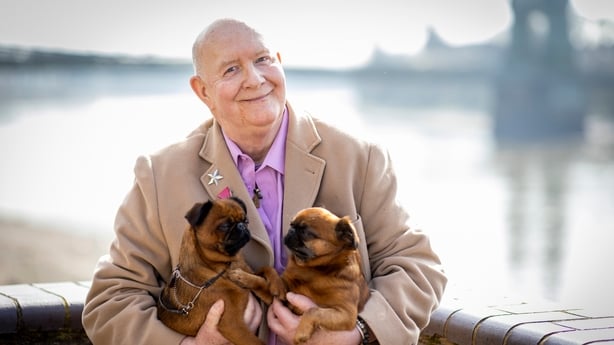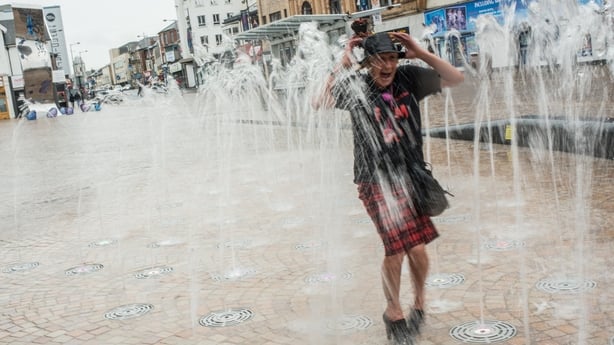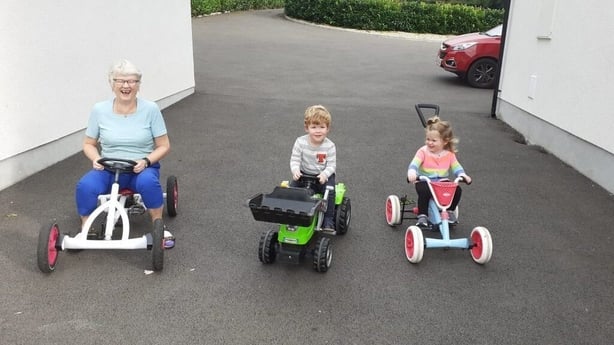Opinion: the positive benefits of ageing need to be more widely acknowledged and that means an end to photos of gnarled hands
How often have you read a story in print media or online which has as its main theme a focus on older people? Is this story represented with a visual image of an older person's gnarled and twisted hands? Gnarled hands represents ageing as feeble and frail, a time to fear growing old. By 2030, one is six people in the world will be aged 60 years or over.
Studies have found that a negative association with the representation of older people can impact on their overall health and well-being. Hyun Kang and Hansol Kim discovered that older adults with a high level of psychological well-being and those who were proud of their age group experienced less negative emotions and were more optimistic about ageing and their future.
We need your consent to load this rte-player contentWe use rte-player to manage extra content that can set cookies on your device and collect data about your activity. Please review their details and accept them to load the content.Manage Preferences
From RTÉ Radio 1's Drivetime, Dr Trudy Corrigan from DCU discusses this article on how to portray older people in a more positive light in the media
The 2021 World Health Organization Global Report on ageism highlights that ageism and stereotypes of ageing is a global problem which needs to be urgently addressed. In the media, older people are frequently depicted as a burden on the healthcare system and to a younger generation.
Why are images or representation in the media important? Visual representation is an ancient art that creates a sense of understanding about people, time and place. It can capture a story in the most compelling way. The first ever photograph to be printed alongside a print news story was in 1848 when French weekly periodical L'Illustration published the photograph which showed Parisian streets barricaded because of a worker's strike. By 1900, visual images to represent news story became a burgeoning demand by editors.
We need your consent to load this rte-player contentWe use rte-player to manage extra content that can set cookies on your device and collect data about your activity. Please review their details and accept them to load the content.Manage Preferences
From RTÉ Radio 1's Drivetime in 2018, Celia Holman Lee and Ted Walsh discuss a study that says 68 is the best age to be when it comes to quality of life for older people
The singer and humanitarian activist Bob Geldof was visibly moved by Mo Amin's images of the famine in northern Ethiopia in 1984. He later said "the pitiless, unrelenting gaze of this camera was different. Somehow, this was not objective journalism but confrontation." Without those photos, Geldof added there would be 'no Band, Live or Sport Aid, no mass outpouring of humanity's compassion. He added 'I do not know why Mo Amin’s pictures did this to me.‘
Positive images of older people are sometimes represented in the media. Images such as those of the biologist and broadcaster David Attenborough create a different representation of an older person. This is also true of images of the first female President of Ireland and UN High Commissioner for Human Rights Mary Robinson.
Both represent two people who have made a very significant contribution to our world as environmental and human rights advocates. Their contribution is not despite of but because of their age. They are not represented in the image of gnarled hands or even the homogenous term 'the elderly.'

As they grow older, people are as diverse in their interests, life experiences and desires as younger people. Representation of older people in an individual context can prove positive affirmation of ageing. But when print or online media try to define issues associated with a large cohort of older people then the gnarled hands appears.
Last year, the Institute of Public Health Ireland launched a How We Age photography competition to capture the experiences of older people in Ireland and Northern Ireland. Supported by the Irish Photographic Federation and the Northern Ireland Photographic Association, the competition was designed to change and challenge how ageing and older people are often portrayed.
"All too often older people are portrayed as either frail or fragile, lonely or depressed", said the Institute of Public Health, "or at the other extreme skydiving, wing walking or running marathons." Instead, they sought to challenge what it means to grow older today 'in an authentic and inclusive way.'

In addition, the Institute of Public Health also created a gallery of free-to-use stock images. There is also an age-positive image library available from the UK Centre for Ageing Better which cover themes such as health, homes and employment. Both initiatives seek to eradicate the idea of portraying older people as one homogenous group and the outdated physical appearance characteristics of older people which also features so frequently in media representation.
The American Association of Retired Persons reviewed a random sample of more than 1,000 online images drawn from brands and thought leaders in America. Their analysis demonstrated that snapshots of younger adults are more varied and diverse compared to those over 65. Seven in ten images of people over 50 showed them in isolated situations, often seated alone with a partner where they were the recipients of medical care. In contrast, younger people were often seen standing in the workplace, giving speeches or actively participating in the world of economics, health and education.

Greater opportunities to promote the positive benefits of ageing needs to be more widely acknowledged in print and social media. The image of gnarled hands so frequently used to represent older people needs to change. This is to challenge the cultural myths of ageing which emphasise vulnerability and decline.
Yes, many older people have gnarled hands but this is not helpful to understand their experiences. Many of them continue to lead full and active lives. Media representation influences how we view ageing and creating awareness of the diverse representation of older people ensures that a realistic and a more positive understanding of ageing is highlighted.
The views expressed here are those of the author and do not represent or reflect the views of RTÉ



